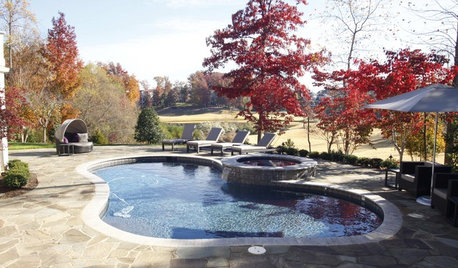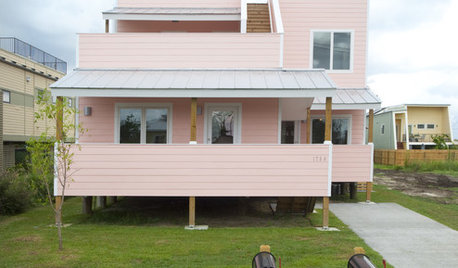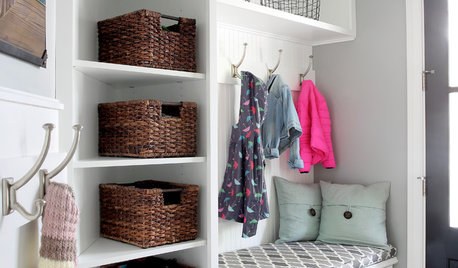I'm finishing up the design stages for a house I'm building, and have questions. I'm looking at putting in a solar electric system, trying to decide batteries or no batteries, and when I try to use any of the online calculators, they tell me that there's no solar system under $100k that will meet my needs. That's a bit distressing, to say the least.
So at the risk of some of my questions seeming too primitive to be believed, here goes.
I live in Hawaii. The house will be facing due south, with no obstructions to cause shade until 4 pm at the earliest. The sun will be going pretty much right over the roof from 8:00 am until 5 Pm, depending on time of the year and which wing of the roof. The house is located in a rainy place, but that's pretty seasonal as well. I've lived on that part of the island before and had solar water. THere were probably no more than half a dozen times that I had to turn on the electric, and that was solely due to my use of the whirlpool tub.
Here's the bad news. Cost per kwh where I live is 29 cents per, and according to my past 11 months of bills, I'm averaging 1400 kwh per month. THe hot water is solar. There really aren't a LOT of ways I can cut that down, although I'm trying to think creatively for the new house.
First, I need to explain that my 6 year old daughter is classified as "medically fragile", and a lot of that electric usage is generated caring for her. She requires constant nursing care. That means there's a lot of laundry done, and the dryer in this house is electric. The rest of the house has to be cleaned with hospital strength stuff once a week as well, more laundry. The nurses like a lot of intense overhead lights, so all the ceiling fans have four regular bulbs, and the cans have the biggest spotlights that fit. Dishwasher is run with less than full loads. This particular house also has two full kitchens, so it's supporting two refrigerators and one tall freezer, none of which are likely very energy efficient. Ceiling fans constantly operating in all rooms, no ac (until the middle of last month, when my daughter's health required it - only needed 2 window units, and likely may not need those at the new house because it's a higher elevation).
The other major use of electricity now is the whirlpool tub. It's used just about every day, to alleviate pain from a nerve injury. In the past, I've found that the tubs seem to use about $100 per month here in electricity.
First, can I set up an overhead lighting system based on low-voltage, actually a 12V line? Something that would keep the nurses happy, but hopefully no lights hanging off the ceiling fans. I see LED spotlight bulbs listed on ebay, would this be the type of thing I should do? What else could be run on a 12v line?
I'm obviously planning on solar hot water, and wondering if I should do two separate ones: a small system to cover the tub and master bath, and a larger one for the rest of the house. Is there some kind of solar panel that can be tied just to the tub to power the motor? Motor runs out of power, it's time to get out of the tub....
I'm going to switch to a gas dryer and oven -- right now the oven is electric too. Outdoor path and driveway lighting will be solar. I've got to put an extensive intercom system into the new house, but I can't imagine that will use a lot of power.
There will only be one big fridge, not 2.
On the other hand, I'm going to be needing to put in quite a bit of water filtration equipment, and I don't know what impact that will have on the electric needs. Right now we go through about $80 a month of bottled distilled water, and I'm thinking about putting a 16 gallon distiller in. It will go strictly to the icemaker, and the "prep" sink in the kitchen, which will actually be the sink for all of Hannah's meds, and making her formula (she feeds through a g-tube). I'm assuming that thing is going to burn a lot of electric all on its own, but I have to be sure as much trace elements of pesticides and heavy metals are removed as is possible.
Are there small wind generators that can provide any kind of input? The winds come straight across the mountains over a valley, and I think one wing of the house will have a straight shot with no obstructions (there's another house being built on that side of the house now). But this is going to vary a lot more than the sun will.
My contractor has already said this is something he's going to talk to me about, and the system would only add on $20k to the price. With the kind of price estimates I was seeing in the online calculators, I figure I need to understand enough about this stuff to ask what I'm getting for that, and hopefully understand what I need.
Any input, ideas and suggestions on this whole situation would be greatly welcomed.
















RCMJr
labradoodleladyOriginal Author
Related Professionals
Phoenix Solar Energy Systems · Cerritos Solar Energy Systems · Freeport Solar Energy Systems · Voorhees Solar Energy Systems · Whitney Solar Energy Systems · Accokeek Home Builders · Dardenne Prairie Home Builders · Newark Home Builders · Superior Home Builders · Kingsburg Home Builders · Cincinnati Roofing & Gutters · Marietta Roofing & Gutters · Blue Island Roofing & Gutters · Hacienda Heights Roofing & Gutters · Ponte Vedra Beach Roofing & Gutters